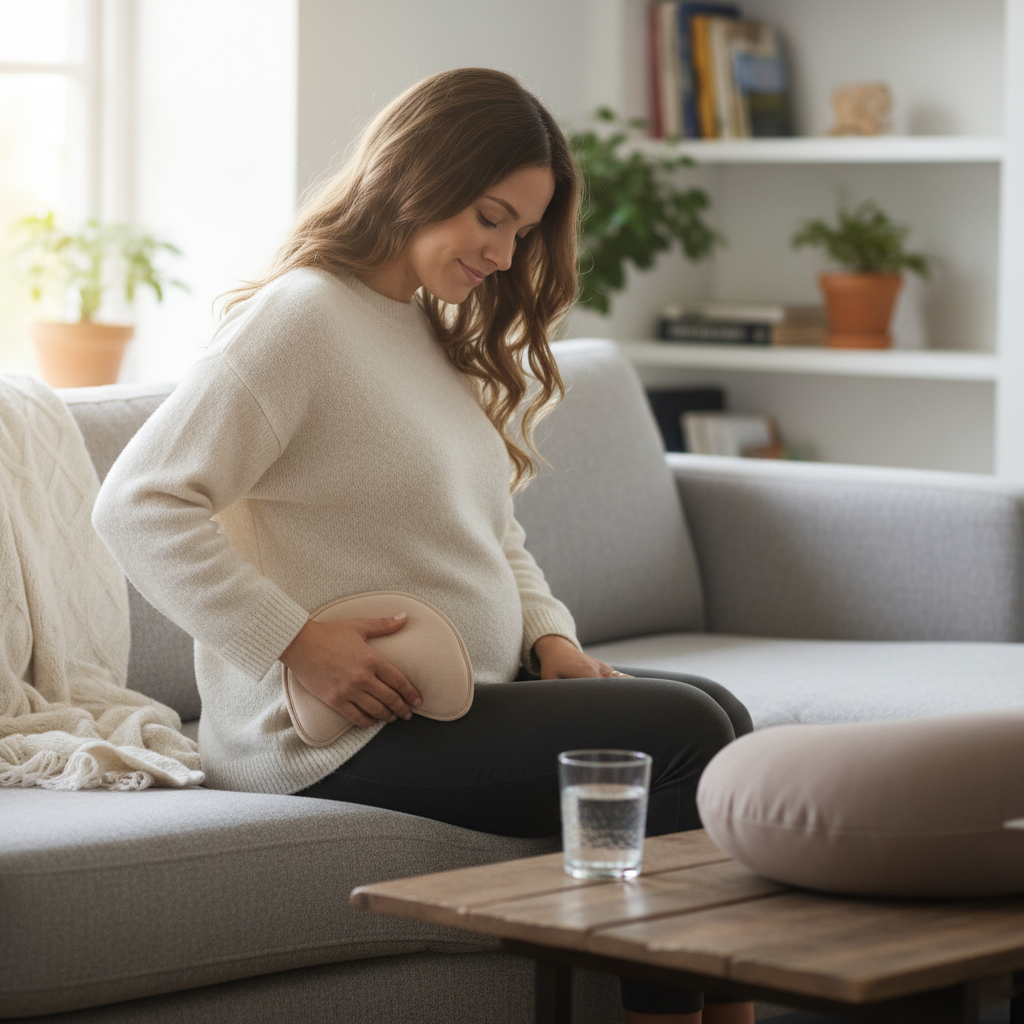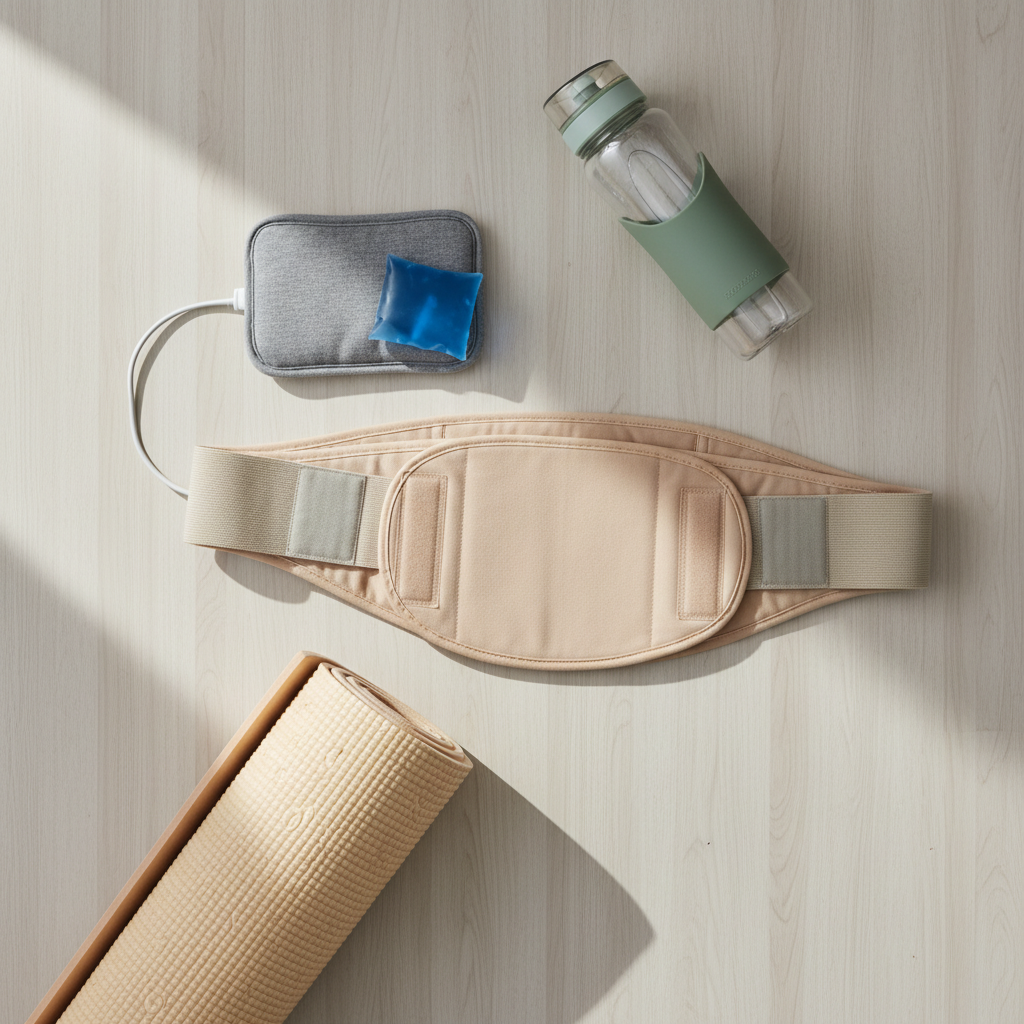
Pregnancy-Safe Ways to Relieve Back and Hip Pain
Back and hip pain affects nearly 40% of pregnant women as their bodies adapt to carry a growing baby. These discomforts, while common during the second trimester and beyond, can be managed effectively with proper techniques and understanding.
Key Highlights
Here’s what you need to know about managing pregnancy-related back and hip pain:
- Hormonal changes and weight distribution are primary causes of discomfort
- Heat therapy, cold compresses, and support bands offer immediate relief
- Pregnancy-safe exercises like prenatal yoga and swimming can reduce pain
- Proper sleeping positions and posture adjustments prevent strain
- Alternative therapies like acupuncture may help when approved by your provider
Understanding the Root Causes

During pregnancy, your body releases hormones like relaxin that loosen ligaments and joints to prepare for childbirth. This natural process, combined with your growing baby’s weight, can put significant pressure on your lower back and hips, especially as you progress through the 2nd trimester. Your center of gravity shifts forward as your abdomen expands, causing your posture to change and creating strain on muscles that aren’t normally engaged in this way.
For many women, the sensation ranges from a dull ache to sharp, localized pain that may worsen with prolonged standing or certain movements. Understanding that this discomfort stems from normal physiological changes can help reduce anxiety about the pain. According to the American College of Obstetricians and Gynecologists, these symptoms typically peak during the third trimester but often begin during the second trimester as your body continues to adapt.
Quick Relief Strategies
When back or hip pain strikes, several safe, immediate relief options can help. Applying a heating pad on a low setting for 10-15 minutes can relax tense muscles and improve circulation to painful areas. Always use a barrier like a towel between the heat source and your skin, and avoid applying heat to your abdomen.
Cold compresses work well for inflammation by numbing the area and reducing swelling. Alternate between heat and cold therapy for optimal relief, with each application lasting no more than 15 minutes. Maternity support bands or belts can also provide immediate relief by supporting your growing abdomen and redistributing weight to reduce strain on your lower back. These supportive garments are particularly helpful during daily activities that might otherwise aggravate your discomfort.
Movement as Medicine

While rest is important, gentle movement often provides better relief than remaining stationary. Water-based exercises are especially beneficial as they offer buoyancy and resistance without strain. The weightlessness you experience in water can temporarily relieve pressure on aching joints while strengthening supporting muscles.
Prenatal yoga poses like cat-cow and gentle pelvic tilts can safely stretch tense muscles and improve alignment. The butterfly stretch and figure 4 pose target hip pain specifically by opening the pelvis and stretching piriformis muscles. Always inform your instructor about your pregnancy, and consider classes specifically designed for prenatal exercise. For more information on adapting your fitness routine, visit our guide on how to safely modify workouts in the second trimester.
Sleep and Posture Adjustments
Proper sleep positioning can significantly reduce nighttime discomfort and prevent morning pain. The American Pregnancy Association recommends sleeping on your left side with a pillow between your knees to maintain proper spinal alignment and optimize circulation. This position not only relieves pressure on your back but also improves blood flow to your baby.
A pregnancy pillow that supports both your abdomen and back can make side-sleeping more comfortable, especially if you’ve traditionally been a back or stomach sleeper. If pregnancy headaches second trimester discomfort is also an issue, proper neck support while sleeping becomes even more crucial. Small adjustments to your daytime posture can also prevent pain from developing. When sitting, use a lumbar support pillow and keep your feet flat on the floor or on a footrest. For more comprehensive sleep solutions, read our article about sleeping comfortably in the second trimester.
Safe Pain Relief Options

When considering medication for pain relief, acetaminophen (Tylenol) is generally considered safe for occasional use during pregnancy when taken as directed. However, always consult your healthcare provider before taking any medication, even over-the-counter options. NSAIDs like ibuprofen (Advil, Motrin) and aspirin are typically not recommended after 20-30 weeks of pregnancy as they may affect your baby’s cardiovascular development.
Alternative therapies offer additional options for pain management. Acupuncture performed by practitioners experienced in treating pregnant women can be effective for back pain. Prenatal massage from certified therapists who understand proper techniques and positioning for pregnancy can also provide significant relief. Some women find TENS (Transcutaneous Electrical Nerve Stimulation) units helpful for managing localized pain, though these should only be used under healthcare provider guidance and never placed on the abdomen.
Preventive Daily Habits
Developing good habits can help prevent back and hip pain before it starts. Wearing supportive shoes with good arch support and avoiding high heels can maintain proper alignment throughout your day. During the 2nd month pregnancy and beyond, proper body mechanics become increasingly important—bend at the knees instead of the waist when picking things up, and avoid twisting your spine while lifting.
Staying well-hydrated supports disc health in your spine and may help reduce cramping. Regular movement breaks are essential if you sit or stand for extended periods. Set a timer to remind yourself to change positions every 30 minutes. Gentle pelvic floor exercises strengthen the muscles that support your growing uterus and can help prevent lower back pain. For additional sleep strategies that can prevent morning pain, explore our recommendations for sleeping better in the second trimester.
When to Seek Medical Help
While most pregnancy-related back and hip pain can be managed with self-care measures, certain symptoms warrant prompt medical attention. Contact your healthcare provider immediately if you experience severe, persistent pain that doesn’t improve with rest or position changes, especially if accompanied by fever, vaginal bleeding, or fluid leakage.
Pain that radiates down your legs with numbness or tingling may indicate sciatic nerve compression that requires medical evaluation. Similarly, sudden, intense pelvic pain could signal a more serious condition requiring assessment. Remember that your healthcare provider is your best resource for distinguishing between normal pregnancy discomfort and signs that need further investigation. Regular prenatal appointments provide opportunities to discuss any ongoing pain issues and develop personalized management strategies.
Embracing Comfort Throughout Your Journey
Back and hip pain may be common during pregnancy, but with proper techniques and lifestyle adjustments, you can significantly reduce discomfort and enjoy this special time. Listen to your body’s signals and give yourself permission to rest when needed while maintaining gentle activity that keeps muscles strong and flexible.
Remember that each pregnancy is unique, and strategies that work for others may need adjustment for your specific situation. Be patient with yourself as you find the right combination of relief methods for your body. With thoughtful self-care and professional guidance when needed, you can manage back and hip discomfort while focusing on the exciting journey toward meeting your little one.
Sources
American College of Obstetricians and Gynecologists – Back Pain During Pregnancy
American Pregnancy Association – Back Pain During Pregnancy
National Institutes of Health – Pregnancy-related low back pain
